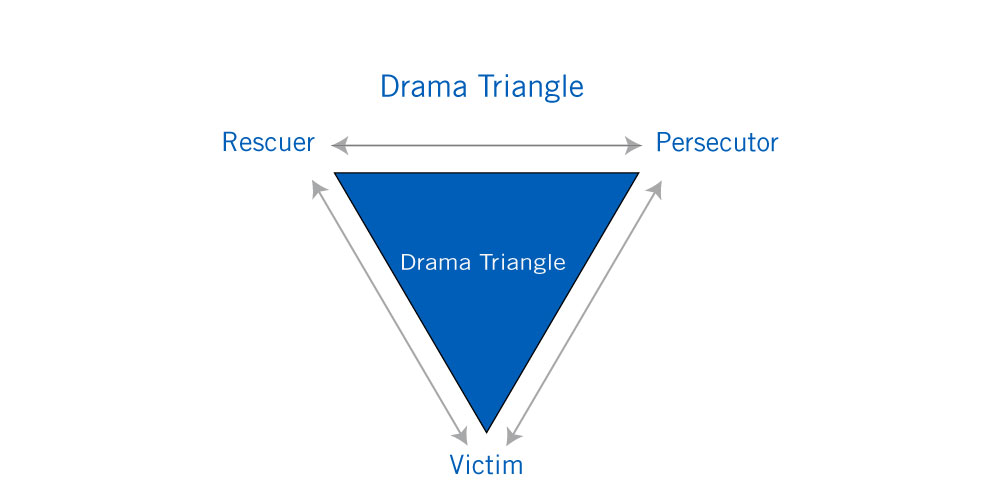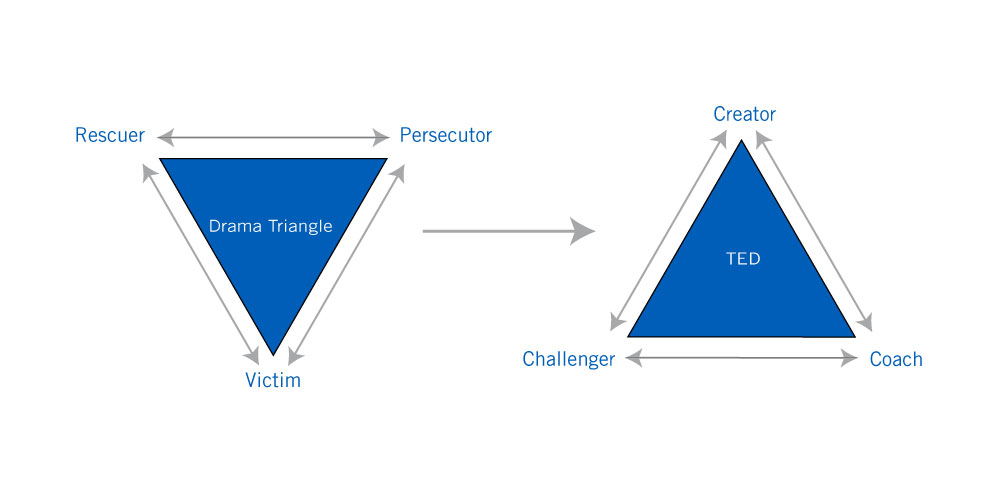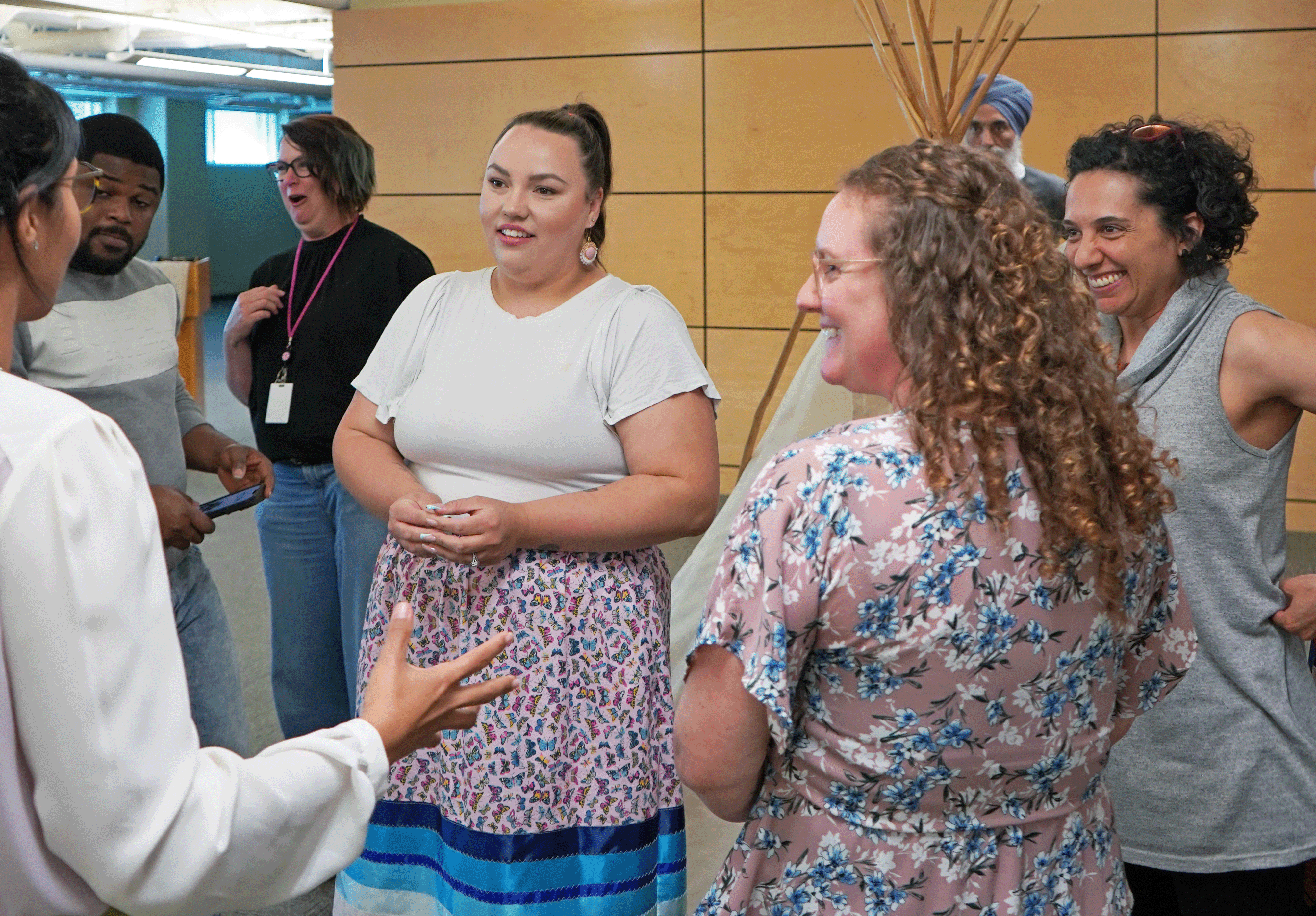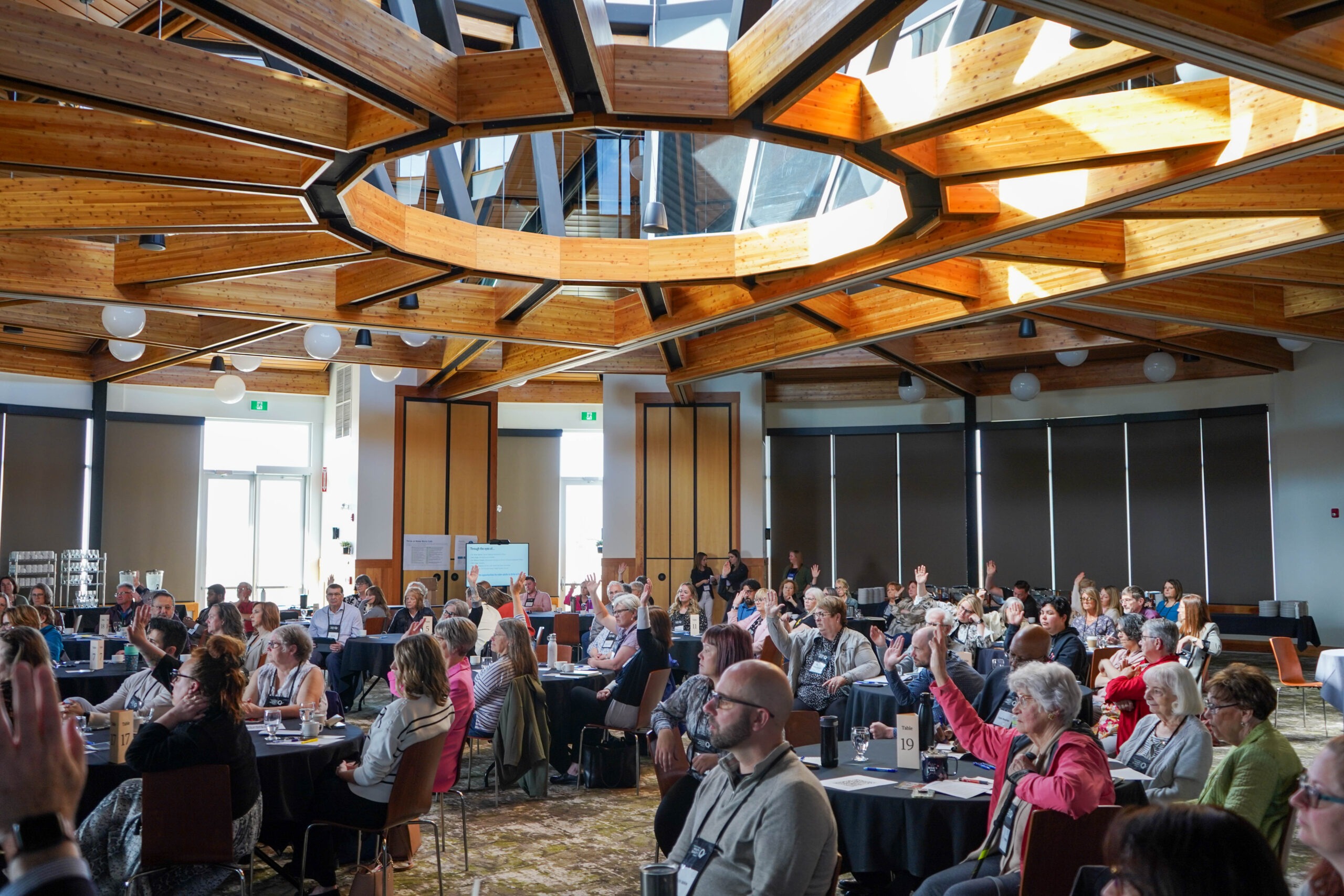It’s important in our lives, both personally and professionally, to recognize drama. In the workplace, drama is harmful to people, relationships, and productivity. Recognizing drama can be tricky because often we don’t recognize it when it is happening. Luckily there are ways to identify drama as it is happening in real-time and knowing how to step away from it. Read on if you’d like to learn how!
Table of contents:
- What is drama
- Recognizing drama in real-time: the Drama Triangle
- Scenario examples
- Why some choose to stay in the triangle
- How to get off the triangle with TED
- Exiting the triangle in real-time
What is drama?

Whether we like it or not, we have all experienced drama. Drama can happen in many places, it can happen in our personal relationships, at work, school, and more. We are also all likely to have a different preconceived notion of what drama is. This blog focuses specifically on drama in the workplace.
There can be many reasons for workplace drama
In the workplace, drama can range from insubordination, petty arguments, office gossip, complaining, bullying … and many more. There can be many reasons for workplace drama. If unattended, workplace drama can increase its power and it can turn into absenteeism, poor working relationships, turnover, and a drain on the corporate culture. There are many ways that one can try and decrease these problems. One of these ways is the drama triangle.
Recognizing drama in real-time: the Drama Triangle
The Drama Triangle

The Drama Triangle was first presented by Stephen Karpman in the late 1960’s and is a dynamic model of social interactions and conflict that can be used as a tool to recognize drama and consciously choose to leave the drama at will. His original model talks about the persecutor, the rescuer and the victim as roles people unconsciously play or try to get other people to play when dealing with drama. There have been many presentations of the drama triangle over the years, but the role of the victim has always remained the same.

The drama triangle has been normalized somewhat as to how we interact with one another. Not only are we often on the triangle, but we can be moving around on the triangle and switching roles as well. An example of switching roles is the superhero Deadpool. Sometimes in the movies, he’s a hero, sometimes he’s the persecutor, and in other times he’s the victim. He moves around the triangle and no matter which role he is in; he has other characters that help support that role.
Scenario examples
Let’s start with a home scenario:

Samantha and Matt have been living together for a few months and although everything has been great, one thing that has been bothering Samantha is that Matt never helps with the laundry and leaves his clothes everywhere other than the laundry basket. Samantha has been cleaning up after him day after day and started to feel like a victim as she felt he did not appreciate her cleaning up after him and was upset that he never helped.
After stewing in that victimhood for a while, Samantha blew up and became a bit of a persecutor. One day when Matt came home, the persecutor came to the forefront. “Can’t you just put your clothes away and do the laundry?” said Samantha. Matt replied, “I work all day, I am too tired when I get home to do laundry.”
In this scenario, Samantha is trying to pass the role of the persecutor to Matt so she can revert back to the role of the victim, but Matt was not picking up that role. Instead, he said, “The clothes don’t bother me, it’s not that bad,”. Samantha was taken back and went away thinking “I have to solve my problem.” That meant a change of mindset. Samantha could no longer be a victim, a hero, or a persecutor. She had to find a solution to the problem.
She realized she could solve this problem by scheduling laundry day to Sundays so that Matt won’t be too tired to help out. Samantha was no longer on the triangle; Matt was no longer on the triangle and there were no more dirty clothes everywhere.
A work scenario:

Rylee has been feeling that her manager Sam has been acting like a persecutor and picking on her at their team meetings, making Rylee feel like a victim. She confides to her co-worker Hayley about it. Hayley wants to help so she plays the part of the rescuer by pulling Sam aside after a meeting and tells him to be nicer to Rylee. When Hayley speaks to Sam, he feels like Rylee and Hayley are ganging up on him and questioning his ability as a manager, this now makes Sam feel like a victim.
This drama results in Rylee feeling upset and less likely to be motivated and productive at work. Sam’s ability to lead his team is less effective as he feels like he is being ganged up on and Hayley is losing time and emotional energy trying to fix the conflict rather than focusing on her work.
All roles ultimately lead to victim
These stories illustrate how we move around on the triangle in our everyday endeavors. In the drama triangle, all roles ultimately lead to the role of the victim. The three positions on the Victim Triangle are called the roles of the victim because no matter where one starts on the triangle, they eventually end up in the victim’s position.
Why some choose to stay in the triangle
Research shows that one of the number one drain in the workplace and drain on productivity is drama triangle related and even though we may want to get off the triangle, we may choose to stay in it for a number of reasons:
- We might like to stick with what we know since drama has been normalized.
- We might want to stay in drama to continue to be right or to be wrong and not have to change.
- We might want to stay in drama for the entertainment of it all.
Those are all common reasons, but one of the biggest reasons to stay in the triangle is, to avoid dealing with real feelings and avoiding those tough conversations. This is where crucial conversations comes in or radical candor. Are you prepared to talk openly about what you’re feeling, what you’re experiencing?
Staying in drama is a choice. it is a choice to stay engaged on the triangle. The only person you can influence in getting off the triangle is yourself.
How to get off the triangle with TED
There are lots of reasons to stay on the triangle as well as a lack of awareness of how to get off of it. Sometimes you may not even know you are on the triangle but in times that you are aware and you want to get off, there is a solution. Flip the triangle with The Empowerment Dynamic
The solution is The Empowerment Dynamic (TED). TED requires whoever is in the drama triangle to switch the roles of persecutor, hero and victim and change them to challenger, coach, and creator.

When the triangle is flipped, the hero is no longer using rescuing language and instead moves into the coach role. The persecutor switches to the challenger role which still offers challenges, but there’s a different type of language that is used in the challenger role as the intention behind the challenge is different.
When you challenge a question or you challenge a process/idea, you are no longer trying to hang on to your existing viewpoint. You are now open to learning, rather than keeping the drama going. Lastly, the victim moves into the creator role. This person is looking for creative solutions and is no longer blaming, or looking outside themselves but instead, look at creating a new dynamic. These overall changes switch the energy from a drama-focused space to a more creative-focused space.
Finding a shared goal between perspectives
These energies, are now pointing into the center of the triangle. It is no longer running around the outside but pointing to the middle, of the triangle where there is a shared goal. That shared goal is what you focus your energies on from each of those three perspectives. They are no longer roles, they are perspectives. There’s the perspective of the coach, there’s the perspective of the challenger and there’s the perspective of the creator.
Clarify the shared goal ahead of time
Once you have successfully altered these roles, the next step is to clarify what the shared goal is ahead of time. If you’re running a design event, you want to share that goal very clearly. Ask questions such as, what is your target statement? What is the goal that you have and how can all members of that team continue to stay focused on that shared goal? When you have shared goals, it makes a big difference because as soon as things start to steer away, you can stop and draw the attention back to that shared goal.
When in doubt, take a time out
Although sometimes the shared goal might not be enough. There is the possibility of losing it within the drama. If that occurs, another way to try and exit the triangle is by “switching” things up. Change your posture, take a deep breath, and/or go for a walk. Sometimes all you need is to excuse yourself from the problem and take some time away to recollect.
Exiting the triangle in real-time
By educating yourself about the drama triangle, you can now work on recognizing drama in real-time and work on bringing yourself and others back to that shared goal. With all learnings, it takes practice so don’t worry too much if you find yourself on the triangle and struggling with exiting at will. These things take time, but now you are more aware and can hopefully start to practice and work on removing yourself from the drama and creating a better environment for yourself and others around you.
Recommended Resources:
Worksheet – Karpman’s Drama Triangle
Blog – Charting a course for team success: the team charter
Webinar video – Building trust with teams in a virtual environment
Blog – How to de-escalate conflict with the Ladder of Inference
Article – Avoiding workplace drama: 4 steps to being an ally, not a rescuer, victim or persecutor




